Advantages & Disadvantages Of An S Corp
An S corporation is a for-profit business structure that may be the right option if you want the tax benefits of a pass-through taxation with the advantages of a corporation.
Advantages:
-
- An S corp helps limit liability to its owners, separating the business and personal assets of the owners. For this protection, the S corp should keep business and personal assets of owners separate (to avoid ‘piercing the corporate veil’).
- An S corp is a pass through entity, so income and losses are passed through to the owners instead of being taxed at the corporate level. The S corp avoids the double taxation of income being taxed at the corporate level and then again at the owner level that occurs with a C corporation.
- Owners can receive both salary and dividends, which may lead to a lower tax owed. The owners can save on self-employment tax, with the caveat that the salary must be reasonable
Disadvantages:
-
- The S corp is still a corporation, and so must stick to the corporation formalities required by its home state. These include Articles of Incorporation, Annual Reports, issuing Shares, and Articles of Dissolution when ending the business, and submitting forms to elect S Corporation with the IRS.
- Information on South Dakota business corporations can be found on the SD Secretary of State website (https://sdsos.gov/Business-Services/) or in their information pamphlet (https://sdsos.gov/Business-Services/BusinessResources/BusinessResourcesDocs/pamphlet-domesticbusiness20170327.pdf)
- The S corp has strict qualifications for who is eligible, per federal law. These rules include strict requirements on the class of stock issued, the number of shareholders, and who the shareholders can be. More information can be found on the IRS website for S Corps (https://www.irs.gov/businesses/small-businesses-self-employed/s-corporations)
- The S corp must allocate their profit and loss to the owners based solely on their ownership percentage (or shares held), and take distributions proportionate to ownership as well.
- The S corp is still a corporation, and so must stick to the corporation formalities required by its home state. These include Articles of Incorporation, Annual Reports, issuing Shares, and Articles of Dissolution when ending the business, and submitting forms to elect S Corporation with the IRS.

